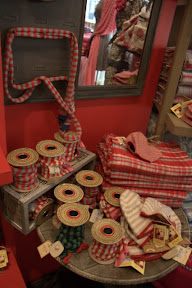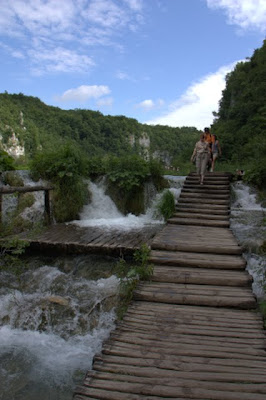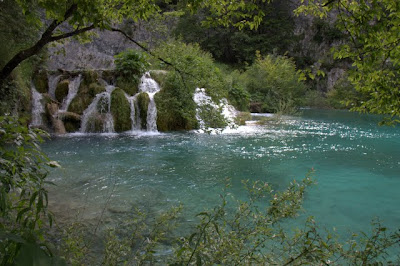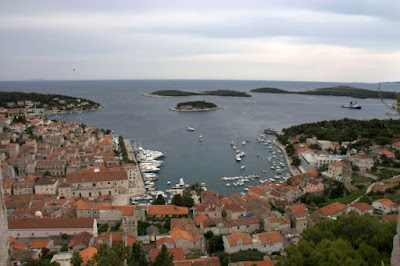Ten Things About Dublin
So, we received conflicting information about Dublin.
In the Irish countryside, we met two bikers from Dublin. They were insistent that Dublin was where it was at. Ya got to get to Dublin! Dublin’s the center of the universe!
A couple of days later, in a pub in Dublin, after the rest of us had gone home for the night, Tony and Jason were talking to two Irish lads who asked where they had visited in Ireland. When Jason told them they only had seen Dublin so far, they seemed very concerned. You gotta leave Dublin, man, they said, urgently. You’ve gotta get the f*ck out of Dublin!
(This last piece of advice made us slightly alarmed. They way they made it sound (or at least the way Jason told the story the next day), it was almost like they knew an apocalypse was about to happen and they were the only ones who knew about it).
While I can’t say I agree that Dublin is the center of the universe, here are ten things about Dublin that made me smile before we got the f*ck out of there (and none even involve alcohol!):
Murphy’s homemade Irish ice cream, made with the cream from the rare Kerry cow and natural ingredients… (this also made me smile in Dingle…and in Kilkenny…)
Queen of Tarts…
The doors of Dublin…
A “secret” garden…
This trio of young street performers, singing I wish, that, I knew what I knew now, when I was younger…
Rainboots and wool scarves at Avoca…
Bridges…
The light shining on this church…
and, last but not least, the man at the camera shop who fixed my camera for nothing more than the cost of a new filter after I dropped my camera and almost shattered the lens…(moral of the story: buy a filter for your lens!!!… and don’t let a klutz take an expensive camera around the world…)
Brand New Day
When I look back at our photos from Ireland, I am struck by how many of the 19 days we spent there were gray. We couldn’t agree on whether it felt more like spring or fall, but it sure didn’t feel like summer. Some nights it was so cold you could see your breath. Rain, at least a misting, was an almost daily occurrence. Weather was a big topic of conversation, even though there never seemed to be anything new to say about it.
On our first day, with the rain pelting me sideways, I thought, god, why in the world do people like this country?
It didn’t take me too long to figure out.
When all the dark clouds roll away
And the sun begins to shine
I see my freedom from across the way
And it comes right in on time
Well it shines so bright and it gives so much light
And it comes from the sky above
Makes me feel so free makes me feel like me
And lights my life with love
And it seems like and it feels like
And it seems like yes it feels like
A brand new day, yeah
A brand new day oh
I was lost and double crossed
With my hands behind my back
I was longtime hurt and thrown in the dirt
Shoved out on the railroad track
I’ve been used, abused and so confused
And I had nowhere to run
But I stood and looked
And my eyes got hooked
On that beautiful morning sun
And it seems like and it feels like
And it seems like yes it feels like
A brand new day, yeah
A brand new day oh
And the sun shines down all on the ground
Yeah and the grass is oh so green
And my heart is still and I’ve got the will
And I don’t really feel so mean
Here it comes, here it comes
0 here it comes right now
And it comes right in on time
Well it eases me and it pleases me
And it satisfies my mind
Budapest Love
We loved Budapest almost immediately. The city felt very modern, stylish and graceful, yet one also felt a sense of history there.
It has something many other cities lack: trees. From the broad, magnificent Andrassy Boulevard, which has trees on either side and a tree-lined pedestrian strip in the middle, to the canopy of trees lining pedestrian only streets, Budapest looked green and leafy. The trees had strong, thick trunks, indicating their history, which complimented the stately architecture well.
I’m fond of cities that are so big that they swallow up the tourists. Because interesting things were all over the city, you could walk down the street and be amongst people just going about their day.
While formerly communist like the other places we have visited recently, the communism in Hungary was not as strict as other countries, giving rise to the term “goulash communism.” Apparently the Russians allowed Hungarians more freedom, such as the freedom to travel, making Hungary more Westernized than the rest of Central/Eastern Europe.
I did not realize until we went that Budapest is often compared to Paris. It is easy to see the comparison, although Budapest felt more relaxed than Paris. Between the casual grace of the city and our super sweet (but cheap!) apartment, we certainly felt relaxed there.

Water wonderland: Plitvice National Park
Our last stop in Croatia was a visit to Plitvice National Park. Apparently, some buses stop there, but from what I read on the internet, taking a bus could be complicated and may involve flagging one down on the side of the road in order to go home. This sounded like more trouble than it was worth, so when we saw an opportunity to rent a super sweet Fiat again for under $40, we jumped at the chance. (Of course, this doesn’t count tolls or gas. One problem with budget cars is they are usually gas guzzlers). Turns out this time, the Fiat was not even made in this decade. And when it was made, it had to be the cheapiest, crappiest car one could buy. Sean: This doesn’t even have power steering! Amy: What does it mean to have power steering?
Plitvice is one of Croatia’s national parks located about 2 hours from Zagreb. It has 16 different lakes, all connected by tons of waterfalls. If we thought the water was turquoise in Slovenia, that is just because we hadn’t seen Plitivice yet. Apparently the lime content in the lakes colors the water various shades of blues and greens. Plitvice is the type of place better explained in pictures than in words, so without further ado:
If you go, consider going to the park late in the day after the tours leave. It only took us about 2 1/2 hours to go through the course that was supposed to take 3 to 4 hours. We also spent about another hour in the park walking up above. The park closes at 7:00, so going around 3:00 or 4:00 will give you plenty of time without most of the crowds.
Island Hopping in Croatia
Croatia has a very long coastline bordering the sparkling Adriatic Sea. Off of its coast lie many islands. Although no one knows for sure how many islands there are, there appears to be over 1200 different islands, with about 60 or so with habitation.
Sailboat charters abound. While we yearned to sail on the open sea, we heard the prices were close to $1000 a day: obviously not an option for two budget travelers. Many articles tout the alternative of island hopping by ferry.
In the summers, ferries run from the mainland to the various islands daily. The most common departure cities are Rjeika, Sibenik, Split and Dubrovnik, with Split probably being the most popular due to its proximity of many of the more popular islands. We found that the articles make island hopping sound a little more carefree and simple than it really is. Not every island is connected to each other each day, and some islands are not connected by ferry at all without a trip back to the mainland. With some advance planning, however, the ferries are a cheap way to see multiple islands.
We wanted to avoid having to traverse back to Split, so we chose a route that allowed us to travel continuously. Here was our route and some scoop about each island we chose:
One: Catamaran (a fast ferry) from Split to Hvar Town, Hvar Island
- Some of the ferries arrive at and depart from Stari Grad, a city north of Hvar. Buses that coincide with the ferry times run from Stari Grad to Hvar Town.
- There were a ridiculous amount of Grannies to greet the ferries in Hvar Town, so have no worries about finding accommodation.
- Our apartment was a 10 to 15 minute walk along the water away from the main part of the old town. We didn’t mind walking, and it got us away from the hubbub of Hvar Town.
- Hvar Town is definitely a place to see and be seen. It feels a little higher end than the other towns on the island that we visited. There were many fancy shops and restaurants lining Hvar’s marble old town. Hvar is supposedly frequented by celebrities, although we didn’t see any. As clubbing is not our thing, we did not go to any of Hvar’s infamous clubs, but there was certainly many people looking to party. There were also families abound. The harbor is lined with enormous yachts that are bigger than some houses. One of our favorite activities on Hvar was selecting the individuals in the crowd who came off the yachts. The sweater tied loosely around the shoulders was a dead giveaway.
- Despite the sceney scene in Hvar, we enjoyed our visit there. It is full of life and was fun to see for a few days. (We planned on staying two nights, but stayed a third because it rained on our second day). We highly recommend getting out to see the rest of the island. The hardy could do this in a scooter, but I (admittedly a wuss) wouldn’t go near the old road with a scooter, high above sea, with no guardrail. We saw older people who put us to shame by riding their bicycles up Hvar’s cliffs. We did it the American way: renting a car for the day to explore the island. The views of the sea from lavender covered cliffs and the heady scent of lavender is worth the cost of the rental.
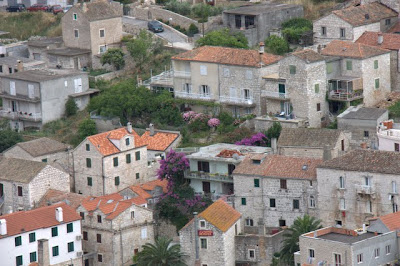



Two: Catamaran from Hvar Town, Hvar Island to Ubli, Lastovo Island
- We took a ferry from Hvar Town to Ubli, the main port on Lastovo Island. From Ubli, you can catch a shuttle bus to Lastovo Town and vice versa.
- Lastovo only has about 800 people total on the island. We knew we had picked a less touristy spot when even most of the Croatians we had met had never been to Lastovo. The island is beautiful, with much of it covered in farmland, mountains or vineyards.
- Although the ferry can take up to five hours from Split to Lastovo, the trip is under two hours if you break it up with a trip to Hvar or Korcula. Plus, there is a fast catamaran (which we took) that reduces the time even further.
- We weren’t sure if there would be Grannies greeting us on Lastovo, so we booked ahead by scouring the Internet. We were right; there was not a single Granny. There is only one hotel on the island. With prices over $100 a night at the hotel, we were glad we found private accommodation in advance. That being said, if you brought a rental car over to the island on the car ferry, it would be pretty easy to find private accommodations by driving up to places labelled konobas and knocking. Many of the konobas have rooms available because they primarily focus on getting sailboats to dock and feeding the sailboat crowds in their restaurants. Without a car, we recommend booking something in advance and arranging for pick up at the ferry dock in Ubli or the bus stop in Lastovo Town.
- It is best not to stay in Ubli (somewhat bland, from what we saw) or Lastovo Town (inland). Without a car, we didn’t get to check out Pasadur, a spot where some rooms can be found. We really liked Zaklopatica Bay, but it is small. The bay is lined with private houses that rent rooms, run small restaurants, and rent dock space to sail boats. Make sure you get a room with a balcony, as the views over the bay are amazing.
- Most (if not all) of the restaurants are not open for breakfast or lunch, so either bring provisions, rent a scooter to ride into Lastovo Town to pick up supplies, or arrange for meals in advance with your host. Other than bring yogurt for breakfast, we did none of those things and almost were caught without lunch. Luckily, the owners of our konoba opened for lunch especially for us.
- Without a car, you are at the mercy of the restaurants in the bay for dinner. Fortunately, all of our meals were tasty (albeit a little pricier than we normally like to spend). We ate at Konoba Santor, where we were staying, as well as Augusta Insula, a popular konoba a few doors down.
- One of the konobas two doors down rented scooters, so we took advantage. Having never driven a scooter before, we ended up wussing out about an hour into the ride and didn’t explore nearly as much of the island as we intended.
- We got the sense that everyone on the island knew everyone else. The island is so small that children live on one of the larger islands or in Split during high school in order to attend school.

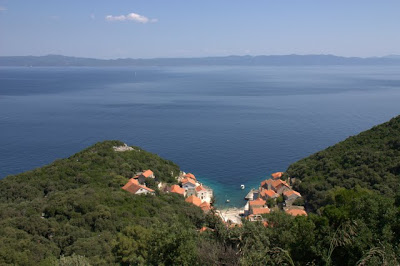

Three: Ferry from Ubli, Lastovo Island, to Vela Luka, Korcula Island
- Korcula is the birthplace of Marco Polo! Many memories of calling out as a kid, Marco! Polo!
- From Vela Luka, we rode a bus through Korcula’s windy roads for about 40 minutes to get to Korcula Town. Again, the buses are timed to coincide with the ferries.
- Although filled with the ever present tourists like Hvar, Korcula Town is smaller and had a better vibe. Many of the bars, cafes and restaurants play music. We especially liked Treseta, a restaurant we stumbled upon one day as we waited for a bus to take us to the beach. The food is great (supposedly homemade by a Croatian granny!) and various people sat and strummed guitars while we ate.

And finally return to the mainland: Ferry from Korcula Town, Korcula Island, to Dubrovnik


